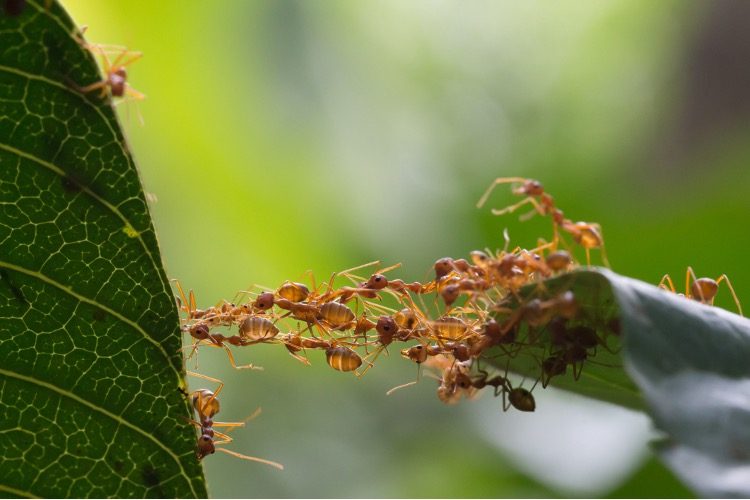
For some time, globalists at the UN and the World Economic Forum have been touting insects as a more “sustainable” form of protein for a world supposedly ravaged by climate change. Now, researchers at San Diego State University (SDSU) tell us that certain species of ants are actually quite flavorful and could be a welcome addition to any menu.
The researchers presented their findings at a meeting of the American Chemical Society in New Orleans.
The SDSU researchers settled on certain ants as food and studied the volatile compounds present in them, chemical makeup, odor, and even taste in a bid to determine if specific species were suitable for human consumption. The researchers studied the chicatana ant, common black ant, spiny ant, and weaver ant.
“I’m interested in ants because I once led a summer field study in Oaxaca, Mexico,” said Changqi Liu, a researcher on the project. “You can easily find different edible insects in the market there, just like other food ingredients.”
The hope is that scientists can somehow find a way to make insects more palatable to Western consumers.
“If there are desirable flavors, scientists can investigate ways to promote their formation, and if there are undesirable flavors, they can find ways to eliminate or mask these odors,” Liu explained.
For instance, the researchers found that the common black ant has an acidic and vinegar-like smell, which they believe is a result of a high amount of formic acid that the species secretes in the form of venom. Common black ants also contain alkanes, a component of alarm pheromones.
If you prefer a “nutty, woody and fatty” flavor, the chicatana ant is for you. The researchers claim that the nutty, roasted smell comes from pyrazines, which are also present when meats and bread are cooked.
For dessert, weaver ants display a “nutty, sweet and caramel-like aroma,” due to various pyrazines and pyrroles. But beware: Weaver ants also displayed a “hay and urine-like off-flavor,” most likely due to the presence of amines in the ants.
“We are trying to explore the flavor profiles of different edible ants and to demonstrate how they have very unique flavor profiles instead of all tast[ing] like chicken,” said Liu. “I think if you have tried these edible insects, you will find that they are actually very tasty. They actually can be a very pleasant thing to enjoy.”
Those “flavor profiles” can actually be quite complex, with some of the ants supposedly tasting of coconut with an almost “tropical” flavor.
“It goes to show how complex the flavor profiles of these edible insects are,” said Selene Alvarado Martinez, another researcher on the project.
Next, the researchers hope to analyze how ant flavors differ in more ant species and at different developmental stages. For example, do ant eggs taste vastly different from adults? Do females taste different from males?
The researchers caution that those with food allergies should approach eating ants with caution since there are common allergens in many species.
“They can have very diverse and interesting flavor profiles. And that really increases the culinary possibilities of using these insects to create delicious food,” Liu said. “But I don’t want people to feel that they are making a sacrifice by eating these insects. I want to show that they can actually taste very good, while being nutritious and good for the environment.”
Insect protein, once thought to be food for fanciful conspiracy theories, is slowly but surely going mainstream. Recall that Tyson Foods, an American food maker, is heavily invested in Protix, a Dutch company that bills itself as “the world leader in insect ingredients.”
Tyson is not yet producing human food with insect protein, but several pet-food manufacturers have begun to use insects in that manner. How long until it becomes common practice to use insects for human food?



